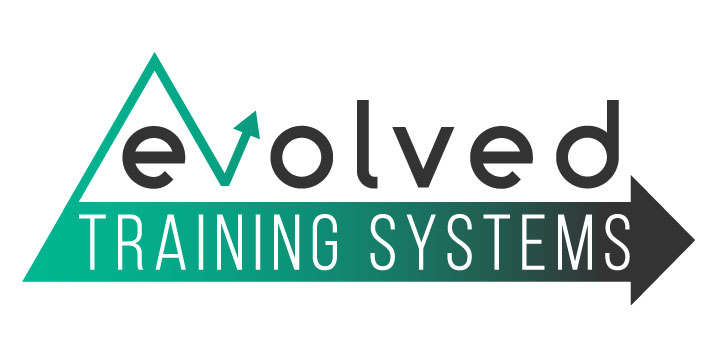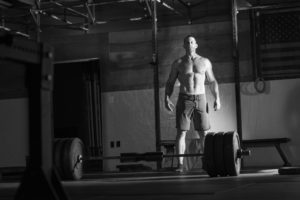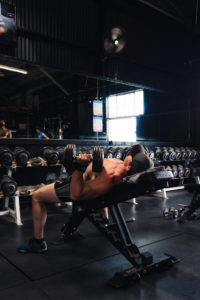Soreness
When we train, we get sore. This seems to be a trend. Train hard, put in the effort, and you are rewarded with muscle soreness, or DOMS, as it is called (Delayed Onset Muscle Soreness). Today, I want to delve a little deeper into the phenomenon of DOMS. Is it necessary? How much is too much? Does it affect training the following day? What can we do limit the fatigue that it presents? And does a severe case of DOMS mean that you should take a rest day?
What exactly is DOMS? WebMD defines it as “Small microscopic tears occur in the muscle.” Basically, this just means that it is the result of pushing the muscles beyond their self-established comfort zone. Furthermore, DOMS tends to manifest itself more severely during movements with a substantial “eccentric.” This refers to the LOWERING portion of the movement, also referred to as the stretch portion of the movement. A perfect example of this is to look at the pull-up. If you were to perform the pull-up by only doing one rep at a time and dropping off the bar from the top, you would limit the potential for soreness. But when you complete multiple reps in a sequence, you are having to control the negative (lowering portion), and this resistance is what causes soreness. The same can be seen in the Romanian Deadlift (RDL), where we are stretching the hamstring as the weight descends, and this is what is responsible for the incredible soreness that follows the next day. Everyone’s threshold for DOMS is different, and just like strength can be trained through progressive overload, the sensation of DOMS can be trained to diminish and be less severe over time.
Back in the day, there were a ton of articles where Arnold Schwarzenegger referenced youngsters asking him where exactly their “lats” were. He used to tell them to go do 50 strict pullups , and they’d know the next day. I implemented this advice, as a motivated teenager, and sure enough, the next day, I knew exactly where my lats were. I decided that I would do 50 pull-ups every other day, and I did this for a number of weeks. But somewhere around the end of week 2 or beginning of week 3, I stopped getting sore. I was perturbed, and I thought that this meant I was no longer getting the desired training effect. There are a number of variables that caused this to occur. The primary reason is adaptation. The human body has a unique was of adapting to stressors. In retrospect, to continue to get sore, I should have increased the volume (more reps) or decreased the time it took to achieve the requisite 50 reps. Either of these scenarios would have caused overload, and I would have continued to get sore.
But is this soreness necessary for growth and training benefit? The answer is no. The absolute number one catalyst for progress is continued overload, regardless of soreness. This causes some confusion, because soreness is NOT the indicator of progress – it just so happens that soreness USUALLY accompanies progressive overload; i.e. if you push the muscle harder, by doing more reps, or doing the same amount of reps in less time, soreness will probably (but not always) follow. All athletes should focus exclusively on increasing overload in some manner, and not concern themselves with whether they are getting sore. Over the course of time, adaptations will always occur that decrease the soreness. In CrossFit, we are constantly utilizing different exercises in a variety of combinations, and that is a primary reason why we never seem to cease getting sore.
Is it a bad thing to get too sore? At what point does soreness become a detriment instead of a benefit? The answer is that YES, soreness can be too severe, and it can definitely become a detriment. On the extreme side, there is Rhabdomyolysis, which is defined by the National Institute on Health as “the breakdown of muscle tissue that leads to the release of muscle fiber contents into the blood. These substances are harmful to the kidney and often cause kidney damage.” This is an extremely rare condition that generally occurs in “untrained” athletes that attempt to do a level of work well beyond their capacity in their first training session. It generally results in swollen muscles which don’t dissipate and eventually the toxins leak out into the urine causing a brown urine stream. This is obviously very severe, and you should seek medical attention immediately. Extreme soreness that falls shy of Rhabdo, also can have negative effects. A pretty good “self test” for this type of soreness is to monitor your natural energy state. You know how you usually feel prior to coming to the gym. Some days it’s harder to get motivated than other days, but usually, once you get to the gym and start working through the warm-up, developing a bit of a sweat, the endorphins start rushing, and you feel great. In the case of extreme DOMS, you may find motivation to be unusually low, and despite a thorough warm-up, you still do not feel mentally primed to attack the workout. This is a tell-tale sign that you have exceeded the healthy level of soreness.
In my training, I have become acutely aware of this phenomenon. I like to push my body to the limit, but sometimes this results in Central Nervous System (CNS) fatigue. I can always tell when this occurs, because I severely lack motivation, and everything feels like a massive undertaking. Just the thought of getting warmed up intimidates me, and I find it easier just to lie on the ground and lament about how unmotivated I am. I have discovered a pattern here, and it usually manifests itself the day following an extremely high volume of heavy barbell movements. I have learned that I can do pretty much any amount of volume of bodyweight movements without feeling this CNS fatigue, but when I do 50 reps of heavy cleans, or 30 reps of heavy deadlifts, or 20 reps of snatch at 90% max, my body talks to me the next day. This is a clear cut example of CNS fatigue, which basically means I have emptied my tank, and I need to replenish it before I can attack another training session with any sort of benefit. Another test I often use for myself is to ask whether this will be a PRODUCTIVE training session. If I am going to just go through the motions, and feel sluggish, then I would be better off resting and coming back the next day to attack a productive session.
Muscle soreness and DOMS are an inevitable part of training hard. In many cases, we welcome this soreness and wear it as a badge to define our dedication. However it is important that we are hyper aware of our own bodies’ response to this. The better we can understand our own physical response to soreness, the more benefit we will get from the time and commitment which we put into our training. Push yourself to the limit, constantly strive for progressive overload, and learn to listen to your body when it tells you to take a rest day.




